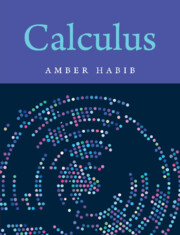Book contents
Summary
Calculus can be described as the study of how one quantity is affected by another, focusing on relationships that are smooth rather than erratic. This chapter sets up the basic language for describing quantities and the relationships between them. Quantities are represented by numbers and you would have seen different kinds of numbers: natural numbers, whole numbers, integers, rational numbers, real numbers, perhaps complex numbers. Of all these, real numbers provide the right setting for the techniques of calculus and so we begin by listing their properties and understanding what distinguishes them from other number systems. The key element here is the completeness axiom, without which calculus would lose its power.
The mathematical object that describes relationships is called “function.” We recall the definition of a function and then concentrate on functions that relate real numbers. Such functions are best visualized through their graphs, and this visualization is a key part of calculus. We make a small beginning with simple examples. A more thorough investigation of graphs can only be carried out after calculus has been developed to a certain level. Indeed, the more interesting functions, such as trigonometric functions, logarithms, and exponentials, require calculus for their very definition.
Field and Order Properties
We begin with a review of the set R of real numbers, which is also called the Euclidean line. It is a “review” in that we do not construct the set but just list its key attributes, and use them to derive others. For descriptions of how real numbers can be constructed from scratch, you can consult Hamilton and Landin [11], Mendelson [24], or most books on real analysis. The fundamental ideas underlying these constructions are easy to absorb, but the checking of details can be arduous. You would probably appreciate them more after reading this book.
What is the need for this review? Mainly, it is intended as a warm-up session before we begin calculus proper. Many intricate definitions and proofs lie in wait later, and we need to get ready for them by practising on easier material. If you are in a hurry and confident of your basic skills with numbers and proofs, you may skip ahead to the next section, although a patient reading of these few pages would also help in later encounters with linear algebra and abstract algebra.
- Type
- Chapter
- Information
- Calculus , pp. 1 - 42Publisher: Cambridge University PressPrint publication year: 2023



